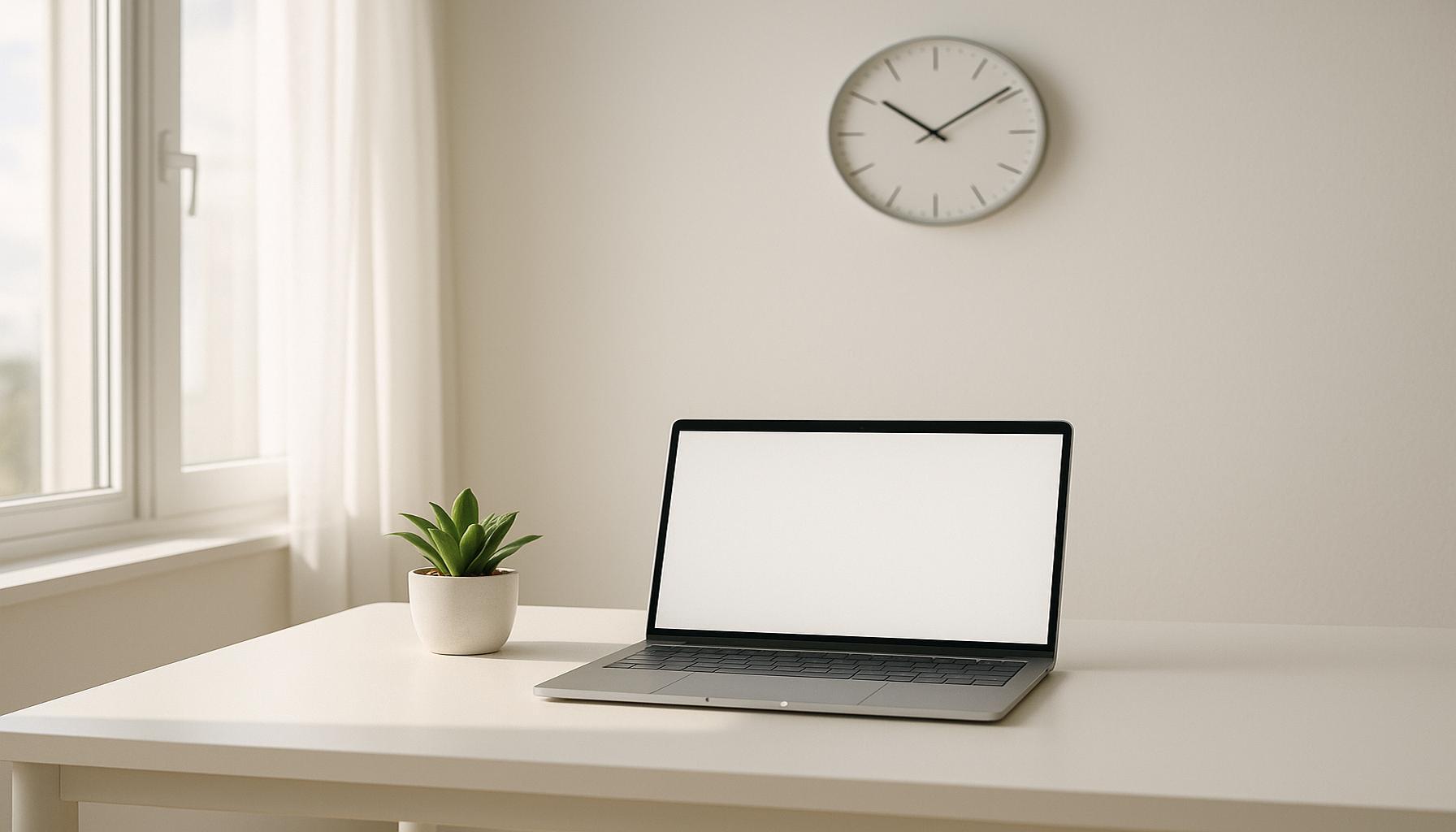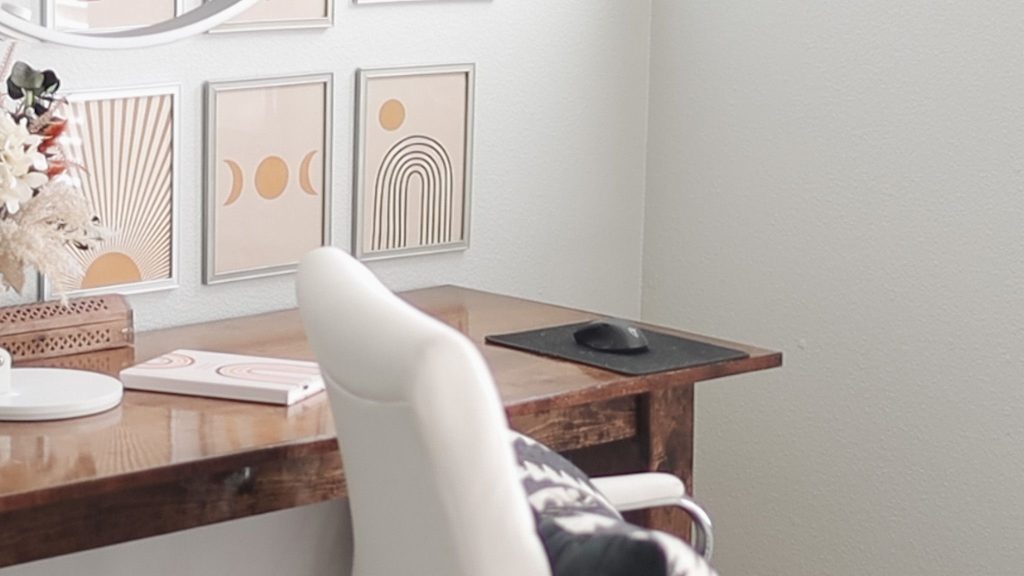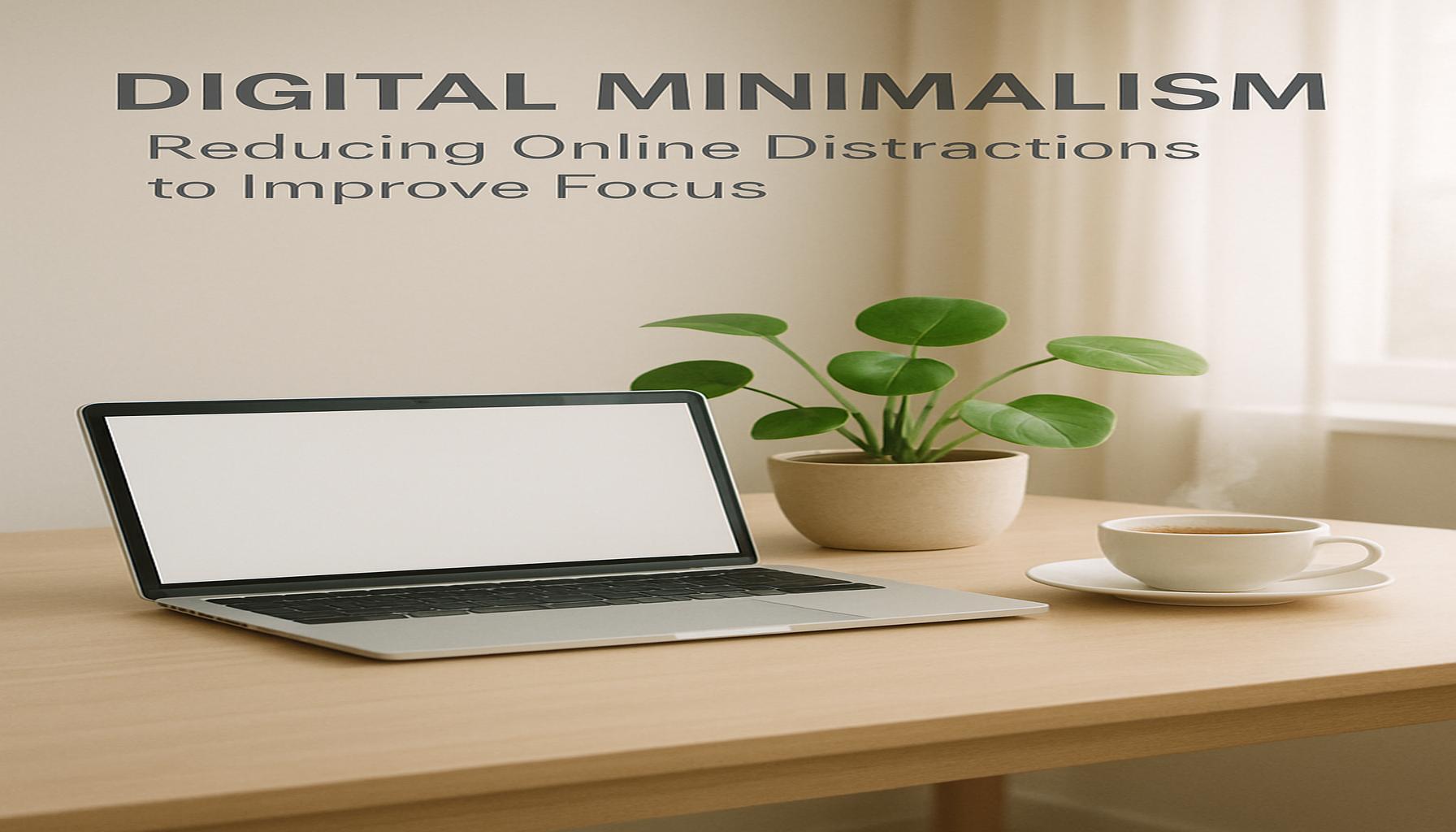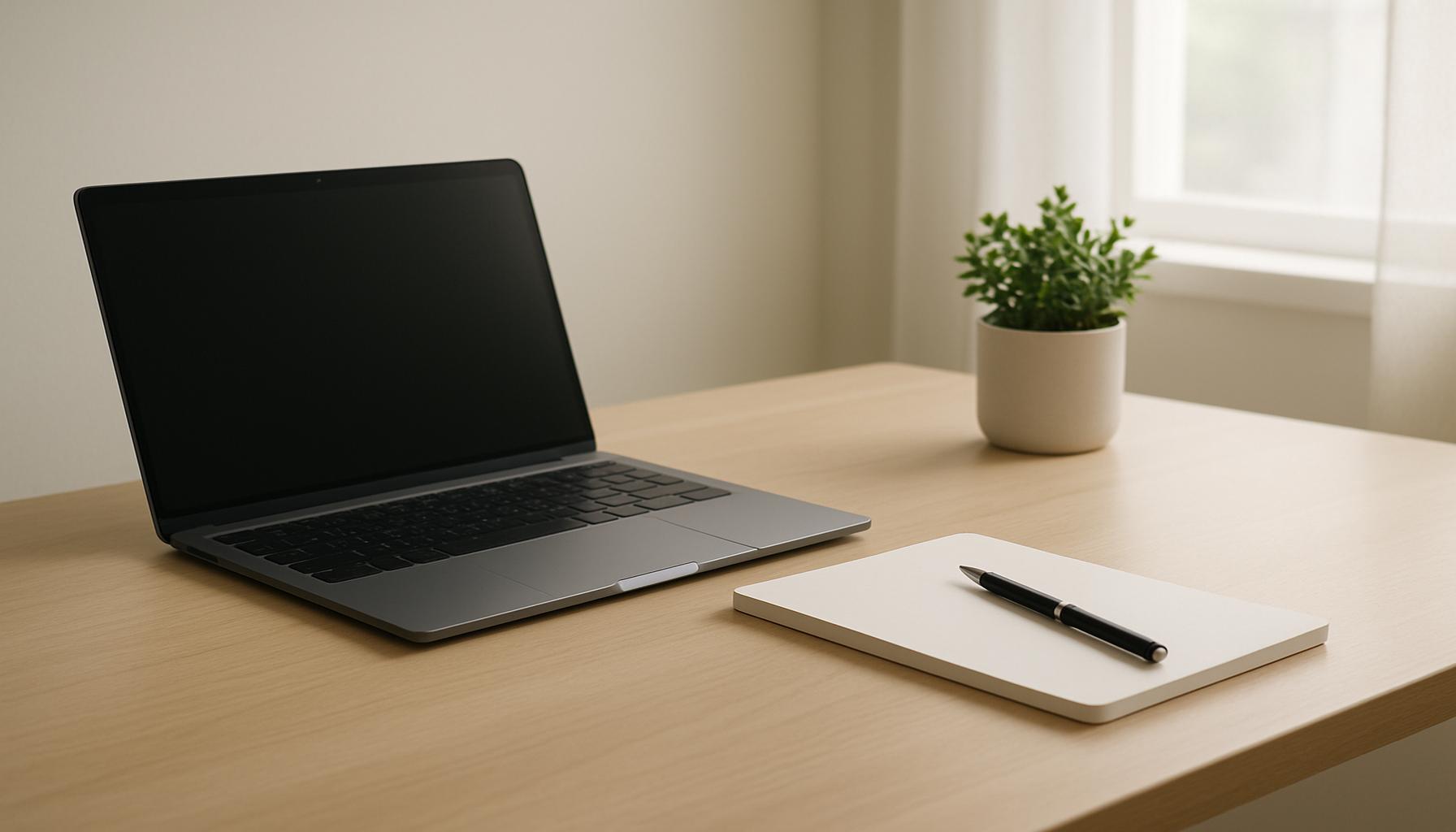The Art of Focus: How Minimalism Can Increase Your Productivity

The Challenge of Distraction
In an age where technology pervades every aspect of our lives, distractions have become a ubiquitous challenge. Instant access to information through smartphones, the continuous barrage of emails, and the persistent ping of notifications contribute to an overwhelming sense of chaos. This environment not only fragments our attention but also erodes our ability to concentrate for prolonged periods, culminating in reduced productivity and increased stress levels.
Understanding Minimalism
Minimalism emerges as a powerful antidote to this modern dilemma. At its core, minimalism is a philosophy that advocates for simplicity and intentionality, focusing on the things that truly add value to our lives. By intentionally stripping away the non-essential, minimalism creates space—both physically and mentally—for individuals to concentrate on what really matters.
Building a Simplified Workspace
One of the most direct applications of minimalism in the workplace is creating a simplified workspace. Research indicates that a decluttered desk can significantly improve cognitive function and promote clearer thinking. For instance, a study published in the *Journal of Neuroscience* found that individuals working in organized environments reported heightened focus and reduced stress levels. A clean workspace not only looks inviting but can inspire creativity and innovation by eliminating visual distractions.
Limiting Digital Distractions
In addition to physical decluttering, minimizing digital distractions can be equally transformative. This involves limiting the number of apps on your devices, disabling non-essential notifications, and implementing specific times for checking emails. Data from the *American Psychological Association* highlights that workers who have fewer digital distractions are not only more focused but also demonstrate improved retention of information. Techniques like the Pomodoro Technique, which encourages focused work intervals followed by short breaks, exemplify how intentional time management leads to enhanced productivity.
Prioritizing Tasks
Another facet of minimalism is intentional time management. This strategy revolves around prioritizing tasks effectively, allowing individuals to allocate their time to the most pressing and vital assignments. By assessing what is truly important, employees can craft to-do lists that align with their core goals. This not only fosters a sense of purpose but also reduces the anxiety that comes from feeling overwhelmed by extensive to-do lists.

The Benefits of Minimalism on Productivity
Statistics reveal that adopting a minimalist approach can yield significant benefits for both focus and job satisfaction. For instance, surveys indicate that employees in minimalist settings, characterized by organized and straightforward workstations, report a 20% increase in productivity compared to those in cluttered environments. Furthermore, minimalism fosters a workplace culture that encourages employees to strive towards meaningful objectives instead of becoming mired in overwhelming tasks.
Conclusion
This exploration of minimalism and productivity illustrates the profound impact that adopting a minimalist mindset can have on our professional lives. By embracing simplicity, we can cultivate work environments that not only enhance our focus but also propel us towards achieving our goals. As we navigate the complexities of modern life, it becomes increasingly clear that sometimes, less truly is more.
DISCOVER MORE: Click here for insights on creating a calming space
The Path to a Simpler, More Focused Life
The journey towards a minimalist approach begins by transforming not just our physical environments but also our mental landscapes. Cultivating a minimalist mindset involves a deep, introspective evaluation of our personal values and a thoughtful reassessment of the contributing factors to our well-being. As we learn to embrace what is genuinely essential in our lives, we can effectively discard the superfluous, thereby enabling our minds to focus and thrive. Research has demonstrated that individuals who actively eliminate mental clutter often report increased creativity and enhanced problem-solving abilities. This creates a space where productivity can flourish, enabling us to tackle challenges more effectively.
The Four Pillars of Minimalism
To successfully adopt a minimalist lifestyle that boosts productivity, one must grasp the four fundamental pillars of minimalism:
- Intentionality: Every decision made, from daily tasks to the belongings we choose to keep, should stem from a place of purpose. When individuals clearly define their personal and professional objectives, they maintain a laser-like focus on the actions that yield meaningful progress. For instance, prioritizing essential projects in the workplace and regularly reviewing long-term goals can lead to more impactful outputs.
- Elimination: This principle calls for individuals to identify and let go of tasks, projects, and possessions that hold little meaning. By reducing commitments, we can prioritize what truly resonates with our values, allowing every action to become more substantial. For example, a person overwhelmed by various social engagements may find rejuvenation by focusing on relationships that bring joy and support rather than obligation.
- Mindful Consumption: Adopting a minimalist mindset encourages a conscious approach to consumption—this could encompass everything from information intake to physical goods. Emphasizing quality over quantity leads to deeper engagement and retention. An example of this is choosing to read a few quality books per year rather than skimming through dozens of superficial articles, thereby fostering a richer learning experience.
- Simplicity: The simplification of processes and workflows can yield significant efficiencies, allowing more time for what truly matters. Streamlining tasks not only speeds up decision-making but also reduces stress levels. For instance, a business might benefit from adopting clearer protocols, thereby minimizing unnecessary meetings and optimizing workload management.
Creating a Minimalist Routine
Establishing a minimalist routine is one of the most potent methods to embed minimalism into daily life. Creating structured schedules helps prioritize core responsibilities while offering necessary restorative breaks. A recent survey indicated that participants who adhered to a routine framework experienced a remarkable 15% boost in productivity. Here are some strategies to develop your minimalist routine:
- Begin your day early to engage in high-focus work before daily distractions arise; this is often the quietest time for most individuals.
- Utilize time-blocking techniques to assign specific periods for task completion, ensuring an organized approach to tackling responsibilities.
- Incorporate regular breaks into your schedule to recharge, maintaining sustained energy and motivation throughout the day.
- Conclude each day with a review of accomplishments and a planning session for the next day, fostering a satisfying sense of completion and clarity.
As individuals begin to weave these principles into their lives, the transition to minimalism often results in an immediate boost in focus and productivity. By reducing distractions and establishing essential habits, we lay the groundwork for achieving both personal and professional aspirations. This shift towards minimalism is not just about living with less; it teaches us to appreciate the richness of life’s simpler elements.
The Art of Focus: How Minimalism Can Increase Your Productivity
In today’s fast-paced world, distractions abound, making it increasingly difficult to concentrate and achieve our goals. Embracing minimalism not only declutters our physical space but also aligns our mind toward productivity. Research indicates that a streamlined environment can significantly enhance focus by reducing cognitive overload. With fewer items vying for our attention, we can direct our energy to what truly matters.
Moreover, a minimalist approach encourages intentionality in our tasks. This principle emphasizes prioritizing activities that bring value while eliminating those that don’t. When we eliminate the non-essential, we create room for deep work—allowing us to immerse ourselves thoroughly in projects or tasks without interruption. This kind of deep engagement has been linked to increased creativity and enhanced problem-solving abilities.
Additionally, implementing minimalism is not just about the physical environment; it extends to digital spaces as well. An unorganized digital workspace can distract and impede productivity. By adopting a minimalist digital strategy—like decluttering your inbox and limiting app usage—you foster a conducive atmosphere for focused work. A cleaner workspace and fewer digital distractions create significant improvements in overall efficiency.
By integrating the principles of minimalism into both our physical and digital lives, we can cultivate a disciplined approach to productivity. In the following section, we will explore the specific advantages of a minimalist lifestyle and how they can propel you toward achieving your highest potential.
| Category 1 | Category 2 |
|---|---|
| Enhanced Focus | Reduced distractions allow clearer thoughts, leading to better decision-making. |
| Increased Productivity | Streamlined environments facilitate deep work, enhancing overall performance. |
As we delve deeper into the minimalist philosophy, it becomes clear that its implications extend beyond mere aesthetics. The purposeful reduction of excess in our lives acts as a catalyst for achieving greater efficiency and fulfillment in both personal and professional realms. Stay tuned as we uncover further insights that minimalism offers to boost productivity.
DISCOVER MORE: Click here for insights on minimalist organization
Harnessing the Power of Distraction-Free Spaces
One of the most significant barriers to productivity in today’s world is the overwhelming presence of distractions. From incessant notifications to cluttered environments, these disturbances chip away at our ability to concentrate and complete tasks efficiently. A minimalist workspace can effectively combat these distractions, serving as a sanctuary for focus and creativity. Studies have indicated that individuals who work in clean, organized environments are not only more productive but also experience lower levels of stress. By implementing the principle of minimalism in our workspaces, we can optimize our surroundings to better serve our need for concentration.
Designing Your Ideal Minimalist Workspace
To cultivate a distraction-free working environment, one should consider several key elements:
- Decluttering: Remove any items that do not directly contribute to your work. This includes old paperwork, unnecessary office supplies, and decorative clutter that can divert attention away from tasks at hand. A study conducted by the National Association of Professional Organizers (NAPO) revealed that 80% of the clutter in most workplaces is a result of poor organization rather than a lack of space.
- Ergonomic solutions: Invest in furniture that promotes good posture and comfort. An ergonomic chair and desk encourage longer periods of focused work by reducing physical strain and discomfort. Research conducted by The American Physical Therapy Association shows that even minor adjustments in posture can increase productivity significantly.
- Incorporate nature: Biophilic design—integrating elements of nature into workspaces—has been linked to enhanced focus and productivity. Adding plants or natural light to a minimalist setting creates a calming ambiance, which can keep your mind clear and engaged.
- Technology management: Be intentional about the technology you use. Consider limiting notifications on your devices, employing website blockers, or dedicating specific times for checking emails, thereby reclaiming focus during key work periods.
Mindfulness Techniques to Enhance Focus
Embracing a minimalist mindset also extends beyond physical spaces; it can improve our cognitive states. Incorporating mindfulness techniques into your daily routine can foster an environment conducive to heightened focus. Various practices can enhance productivity:
- Meditation: A simple daily meditation practice can significantly enhance your ability to concentrate. Research has shown that even a few minutes of meditation can improve focus, promoting clarity in both thought and action.
- Deep Work: Popularized by author Cal Newport, ‘deep work’ involves periods of uninterrupted focus on cognitively demanding tasks. By batching similar tasks together and minimizing distractions, you can achieve a state of deep work that maximizes productivity.
- Journaling: Reflecting through writing can aid in decluttering the mind. Spend a few minutes each day jotting down your thoughts and tasks, clearing mental space for focused activity.
By employing these strategies, we can further solidify the benefits of minimalism in our lives, allowing ourselves to pursue not just productivity, but deeper fulfillment in our work. The shift toward a minimalist and mindful approach not only enhances our focus but also enriches our engagement with our work, ultimately leading to greater satisfaction. Minimalism is not merely an aesthetic; it is a foundational principle that can transform how we experience productivity across various realms of life.
DIVE DEEPER: Click here for insights on mental clarity and minimalism
The Path Forward: Embracing Minimalism for Enhanced Productivity
In today’s fast-paced world, the art of focus has never been more crucial, and minimalism offers a powerful antidote to the distractions that surround us. By prioritizing simplicity and intentionality in our environments and routines, we can create the ideal conditions for productivity to flourish. The key takeaways from our exploration highlight that a minimalist workspace not only reduces clutter, but also alleviates stress, while ergonomic furniture and the incorporation of nature contribute to sustained concentration and comfort.
Moreover, intertwining mindfulness techniques such as meditation, deep work, and journaling into our daily practices reinforces our ability to maintain focus amid chaos. Studies reveal that those who integrate minimalism into both their physical and mental spaces tend to experience heightened productivity and deeper engagement with their work. Yet, this shift requires deliberate effort; it invites us to reassess the materials, technologies, and habits we hold onto.
As we continue to navigate the demands of modern life, embracing a minimalist mindset can become a transformative element of our productivity journey. Whether it’s clearing out a cluttered desk or setting boundaries around technology use, each small change can lead to significant improvements in our focus and overall satisfaction. By forging a path paved with simplicity, we not only enhance our productivity but also find joy and fulfillment in our work. As you ponder these principles, consider how you can apply minimalist strategies to your own life, inviting clarity and purpose into every task you undertake.


